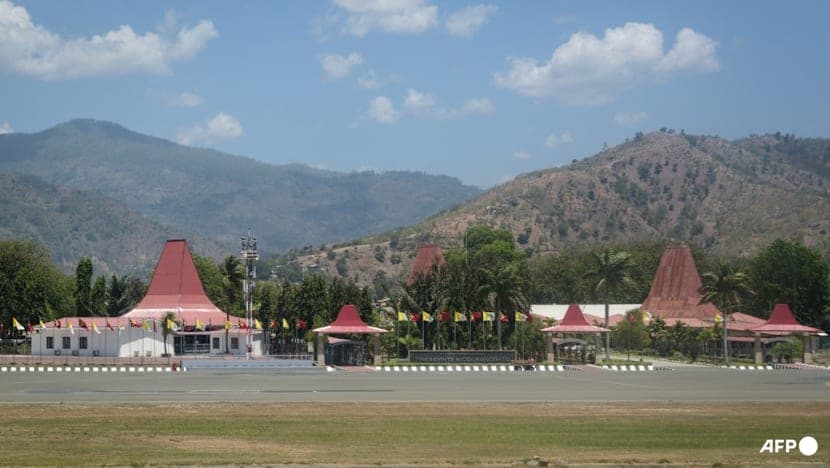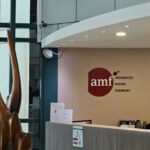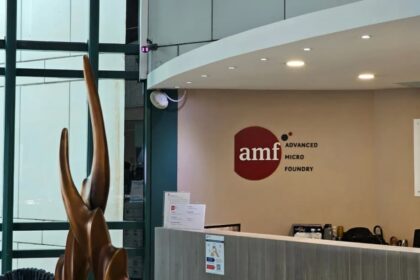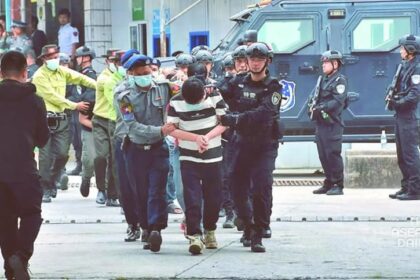An ASEAN debut drives a fast rebuild
Fresh from joining ASEAN as its 11th member, Timor-Leste is moving quickly to upgrade core infrastructure and lay tracks for growth. The government wants faster air links, better hospitality capacity, and a workable path to monetize offshore gas. That mix underpins ambitions to host an ASEAN Summit in 2029 and to attract the capital and skills needed for a young nation of about 1.4 million people.
- An ASEAN debut drives a fast rebuild
- The airport overhaul: capacity, safety, and connectivity
- Tasi Mane and the south coast energy corridor
- Greater Sunrise: what is at stake
- Can the Petroleum Fund carry the load
- Policy continuity and the investment climate
- ASEAN membership and regional partnerships
- What diversification could look like
- Key Points
The most visible work sits in the capital. Dili’s Presidente Nicolau Lobato International Airport is being expanded to handle larger aircraft, operate after dark, and lift annual throughput from roughly 200,000 to about 1 million passengers. On the south coast, the Tasi Mane corridor aims to connect energy projects and logistics hubs, with the Greater Sunrise gas field as the flagship. Greater Sunrise holds an estimated 5.1 trillion cubic feet of gas that the country hopes to process onshore to build jobs, skills, and downstream industry.
These projects arrive with pressure points. Public finances still lean on the Petroleum Fund, policy continuity has been uneven, and resettlement is needed in some places to clear land for new assets. Leaders frame the current push as a chance to improve daily life and build an economy that can stand on a broader base than oil and gas alone.
The airport overhaul: capacity, safety, and connectivity
Dili’s main airport is set for a comprehensive upgrade. The runway will be extended from 1,850 meters to 2,100 meters and widened from 30 meters to 45 meters. The plan also includes a new air traffic control tower and a two storey passenger terminal. Today, the airport handles about 21 flights a week and can operate only in daylight. After the works, it will support night operations and a throughput target near 1 million passengers a year. Construction is scheduled to start in January and finish in early 2028, with a mix of domestic and international financing supporting the project.
For travelers, the changes should reduce delays and add flight options. A longer, wider runway better suits common narrowbody jets like the Airbus A320 and the Boeing 737. Those aircraft can serve more destinations with fewer weight limits, which helps airlines schedule regular links to hubs in Indonesia, Australia, and beyond. More apron space and a modern terminal would also speed ground handling and improve the experience for visitors and returning citizens.
Why night operations matter
Night operations allow more flexible schedules and help carriers connect into morning and evening bank departures at regional hubs. That opens better onward connections for business travelers, students, and tourists. It also makes the airport more resilient when weather disrupts daytime flights, since carriers can recover schedules after sunset.
Safety and public services benefit as well. Night-certified infrastructure supports medical evacuations, disaster response, and emergency diversions at any hour. Upgrades to airfield lighting, approach procedures, and staffing will reduce cancellations and help airlines plan reliable rotations during peak seasons.
Hospitality and MICE are gearing up
With better air links on the horizon, the hospitality sector is preparing. Dili now hosts the Palm Springs Hotel, the country’s first five star property with about 150 rooms and suites. Management has invested in staff training and aims to raise the share of solar power used on site to roughly 20 percent. New properties are in the pipeline, including the Pelican Paradise seafront project and a proposed five star casino hotel.
Timor-Leste is also positioning for meetings, incentives, conferences and exhibitions (MICE). Plans for a new convention center in Dili would help the capital host larger regional gatherings and pre-summit events. This matters for a small market trying to diversify, since MICE visitors tend to spend more per trip and can be steered toward local tours, crafts, and culinary businesses.
Tasi Mane and the south coast energy corridor
On the southern shore, the Tasi Mane initiative is designed to connect energy assets with roads, ports, and aviation. Work has begun on a new highway linking key towns such as Natarbora and Suai. The concept foresees Natarbora as a refinery and liquefied natural gas hub, with Suai serving as a logistics center. The upgraded Xanana Gusmao International Airport at Suai supports offshore operations, including helicopter flights and crew changes.
Development requires land. Families living near Suai’s airport are slated for relocation to make room for expansion. Managing resettlement with fair compensation, clear communication, and community services will shape public trust. Transparent processes and attention to livelihoods can reduce tensions and keep construction on schedule.
Greater Sunrise: what is at stake
Greater Sunrise, located in the Timor Sea, holds an estimated 5.1 trillion cubic feet of gas with a potential value above USD 70 billion over the life of the project. Timor-Leste holds a majority stake in the venture through state-owned Timor Gap, alongside Woodside Energy and Osaka Gas Australia. Officials expect a decision on the processing route soon. The government argues for a pipeline to Timor-Leste to support domestic power, industrial use, and an export-oriented LNG plant.
Where to process the gas
The central choice is whether to pipe gas to Timor-Leste for onshore liquefaction or send it to an established facility outside the country. An independent study for the joint venture found that bringing the pipeline ashore and building an LNG plant in Timor-Leste is technically possible and commercially viable. A local build would create construction jobs, expand the skills base, and anchor long life industry in the south. It would also give the country its own gas supply for power generation and for industries such as fertilizers or ceramics.
Opponents of an onshore plant typically point to higher upfront costs and execution risks when a small market takes on a mega project. Proponents counter that the gains from local content, energy security, and downstream opportunities outweigh those risks if governance and contracting are strong. A final design must balance engineering, finance, and market realities, since LNG projects only move ahead when all three align.
Market dynamics and financing
The LNG market is competitive. New supply from Qatar and the United States continues to enter the pipeline of projects, while Asian demand grows at varied speeds from country to country. To reach a final investment decision, Greater Sunrise will need long term sales contracts and bankable financing structures. Lenders also review emissions profiles and community impacts. That puts a premium on efficient engineering, transparent procurement, and credible plans to lower carbon intensity over time.
For Timor-Leste, bringing gas ashore could cut reliance on imported diesel for power generation and reduce exposure to global fuel price swings. Lower and more stable electricity costs would help households and make it easier for small manufacturers, tourism operators, and digital services to thrive. A gas-to-power bridge can also support more solar and wind by providing reliable backup when the sun sets or winds ease.
Can the Petroleum Fund carry the load
Timor-Leste’s Petroleum Fund has been a financial lifeline. Analysts place the fund near USD 20 billion, a sizable buffer for a small country. The government follows an Estimated Sustainable Income rule that targets a long run withdrawal of 3 percent of the fund’s value each year. In practice, annual budgets have often required larger draws to pay for roads, schools, hospitals, and state-led investment.
Bayu-Undan, the country’s previous gas producer, has ceased output, and that has tightened the fiscal picture. Without new petroleum revenue, the fund could shrink faster than expected and face depletion around the mid 2030s. That risk concentrates attention on Greater Sunrise, but it also underlines why diversification matters. Coffee exports have grown, tourism has potential, and small industry can expand productivity with better power, water, and transport. The airport upgrade and hospitality projects are part of that shift.
Policy continuity and the investment climate
Investors weigh more than geology and concrete. They also look for steady policy, clear rules, and reliable timelines. Timor-Leste’s politics feature strong personalities and frequent shifts in governing coalitions. That creates a risk of changing priorities from one cabinet to the next. Moving large projects across election cycles requires durable agreements and shared milestones that public agencies can uphold regardless of who holds office.
The country welcomes foreign investment with incentives such as tax exemptions for qualifying projects, and it is working to streamline regulations. Challenges remain. The domestic market is small, infrastructure gaps are real, the financial sector is shallow, and contract enforcement can be slow. Land tenure is often complex, reflecting overlapping legal systems and unresolved claims from past conflicts. Companies also report skills shortages that drive up training costs. To address gaps, the government has proposed a national development bank, Banco Nacional de Desenvolvimento de Timor-Leste (BNDTL), and is rolling out digital systems such as a national digital ID to improve public services and reduce red tape.
Budget priorities point in the same direction. Public plans emphasize roads and bridges, power distribution upgrades and renewable energy, water and sanitation, airport improvements, and infrastructure for the resources sector. Targeted spending can remove bottlenecks that hold back private investors, particularly in logistics, tourism, food processing, and light manufacturing.
ASEAN membership and regional partnerships
Joining ASEAN opens doors to trade frameworks, investment pools, and technical cooperation. Leaders in Dili have invited companies from across the region to look at opportunities in airports, tourism facilities, digital services, and energy. Malaysia is seen as a natural partner, given long standing ties and expertise in oil and gas. Interest from regional players in the Greater Sunrise project would bring capital and know-how, while spreading risk across several investors. Capacity building with ASEAN neighbors also supports training for aviation, customs, and hospitality ahead of high profile events.
MICE activity is a practical near-term target. A new convention center, paired with higher frequency flights and more hotel rooms, would help Timor-Leste host ministerial meetings, trade fairs, and academic congresses. Successful execution would bring a steady stream of visitors who spend widely across the local economy, from restaurants to transport to creative services.
What diversification could look like
Tourism can grow around nature and culture. Timor-Leste has strong marine biodiversity, pristine reefs, and dramatic highland scenery. With better air access, improved visitor services, and environmental protection, the country can develop niche segments such as diving, trekking, and community stays. A consistent visa experience and digital booking tools would help small operators reach international travelers.
Food systems are another priority. Coffee is already the leading export and can climb further with better seedlings, processing, and branding. Investments in irrigation, storage, and cold chain logistics would cut waste and raise farmer incomes. Fisheries can also benefit from improved landing sites, quality controls, and sustainable management to protect stocks.
Clean energy rounds out the picture. Solar power is scaling globally and suits Timor-Leste’s climate. Hotels and public buildings are adding panels, with targets to raise on-site generation. Gas from Greater Sunrise, if brought onshore, could stabilize the grid while renewables expand, keeping lights on for homes, clinics, and businesses. That combination would lower power costs and make domestic industry more competitive.
Key Points
- Timor-Leste has joined ASEAN as its 11th member and aims to host an ASEAN Summit in 2029.
- Dili’s main airport is being upgraded with a longer and wider runway, a new control tower, and a two storey terminal to enable night operations and lift capacity to about 1 million passengers a year by early 2028.
- Hospitality is scaling up, with the country’s first five star hotel open in Dili, additional resorts proposed, and a new convention center planned to support MICE events.
- The Tasi Mane corridor on the south coast includes a new highway linking Natarbora and Suai, with Natarbora envisioned for refining and LNG, and Suai as a logistics hub.
- The Greater Sunrise field holds an estimated 5.1 trillion cubic feet of gas. Timor-Leste favors piping gas onshore for an LNG plant and domestic power, with a processing decision expected soon.
- An independent study concluded that an onshore LNG plant in Timor-Leste is technically possible and commercially viable, though financing and execution risks must be managed.
- Public finances rely on the Petroleum Fund near USD 20 billion. Without new revenue, the fund could be depleted around the mid 2030s.
- Policy continuity, land tenure, and administrative capacity are ongoing challenges, while investment incentives, a proposed national development bank, and digital systems aim to improve the business climate.
- ASEAN membership is expected to boost investor interest and cooperation, including potential participation from regional energy companies in Greater Sunrise.
- Diversification opportunities include tourism, coffee and agriculture, fisheries, and clean energy, supported by better transport and power infrastructure.












